#efficient healthcare delivery
Explore tagged Tumblr posts
Text
Discover a groundbreaking healthcare engagement solution tailored to enhance patient-provider relationships and streamline communication. This approach focuses on leveraging technology and personalized strategies to improve patient engagement and adherence to treatment plans. By integrating patient feedback and data analytics, healthcare providers can deliver more efficient and responsive care experiences.
0 notes
Text
Zipline's Unveils New autonomous drone for Quiet, Fast, and Precise parcel delivery
Logistics startup Zipline has made headlines in the autonomous electric delivery drones, which have flown an impressive 38 million miles since the company’s founding in 2014. On Wednesday, the Silicon Valley-based startup unveiled its next-generation aircraft, which it hopes will make rapid aerial deliveries an everyday convenience for customers in the UK, including those in densely populated…
#2023#Autonomous#cargo#charging#Delivery#Drones#efficient#faster#Healthcare#hospital#news#patient care#Technology#UAV#Vehicle#Zipline
1 note
·
View note
Text
Degrowth scholarship notes that capitalist growth depends on the creation of artificial scarcity. Human needs can typically be satisfied either by means of relatively resource-efficient, non-commodified need satisfiers (for instance, public transit; food from a community kitchen), or by means of relatively scarce and resource-inefficient commodities (a privately owned car; a meal from a home-delivery service). Under capitalism, essential goods (housing, healthcare, transit, nutritious food, etc.) are commodified and access is mediated by prices that are often very high. To obtain the necessary income people are compelled to enter the capitalist labour market, working to produce things that may not be needed simply to access things that clearly are needed. Artificial scarcity of essential goods thus ensures a steady flow of labour for capitalist growth. It also creates growth dependencies: if productivity improvements (or recessions) lead to unemployment, people suffer loss of access to essential goods and growth is needed to create new jobs and resolve the social crisis. This dynamic explains why, despite capitalism's high levels of production and resource use, many basic needs remain unmet even in high-income countries. In this respect, capitalism is deeply inefficient and wasteful.
How to pay for saving the world: Modern Monetary Theory for a degrowth transition
883 notes
·
View notes
Text
The Independent: Reactions to the killing of insurance CEO reveal a deep anger over US healthcare
The public reaction to this guy's death revealed a collective agreement that his job involved deciding who lives and who dies for no greater good than shareholder value. He was walking into a meeting of people who depended on him *not* spending people's premiums on delivering healthcare and instead delivering profits to the investors.
This was a meeting of people who wanted to know how Brian Thompson was going to take more of the money the policy holders pay to UnitedHealth for healthcare and convert it to operating margin that could be passed through to investors.
In health insurance, you achieve shareholder value by denying claims for care. You return money to investors by leaving policy holders in pain or allowing them to die.
There is no pro-social motivation. It's not "we are limiting this resource to you because it provides for the greater good." The rationale is "this treatment is expensive, and there is a fund manager from Connecticut who controls two board seats and is demanding more 'efficiency' in our care delivery."
I'm sure this guy loved his kids and blah blah blah. His job wasn't to deliver healthcare to policy holders, it was to deliver profits to shareholders, and when someone "took that personally" nobody was the least bit surprised.
29 notes
·
View notes
Text
“Those who do not learn history are doomed to repeat it” - George Santayana,
Wes Streeting has announced a new regime for NHS hospitals, with OFSTED type league tables and the sacking of under performing managers. Hospital trusts can expect to be ranked on a range of indicators such as finances, delivery of services, patient access to care and the competency of leadership. Top performing trusts will be given more money and greater freedom on how that money is spent.
I have no idea how effective these reforms will be but Streeting would be well served to remember the negative impact the introduction of OFSTED league tables had on schools and teaching staff.
For years concerns were voiced regarding the heavy handedness of OFSTED, its crude reporting format and its negative effects on staff moral. The suicide of head teacher Ruth Perry, having had her school downgraded by OFSTED from “Outstanding" to " Inadequate”, led to an inquiry into the whole OFSTED process. This inquiry described OFSTED as “toxic” and "not fit for purpose". We can only hope Streeting’s new hospital inspectors will not make the same mistakes.
Wes Streeting and his new inspectors would do well to remember the social context within which individual hospitals operate.
In education it was found that :
“A school in a poor area is five times more likely to be ‘failing’ than affluent areas” (tes magazine: 16/06/18)
In other words, the more deprived an area, the more likely it is for schools to be judged by OFSTED as “failing” or “inadequate”. It cannot be a coincidence that social class seems to play a major role in the success of a school as measured by the narrow focus of OFSTED. Will the same bias apply when hospitals are being judged under Wes Streeting’s new NHS inspection regime?
Wes Streeting is a keen advocate of utilizing AI within the NHS.
"AI has the potential to revolutionize healthcare by improving efficiency, reducing waiting times, and enhancing patient outcomes. We must embrace this technology to ensure the NHS can meet the demands of the future." (29/06/23)
Taking Wes Streeting advice I consulted AI when asking this question:
“Is there a link between the social class of an area and the success of hospitals serving that area?”
Unsurprisingly, AI found there was indeed a very strong connection between the two.
“Yes, there is a link between the social class of an area and the success of hospitals serving that area. Research has shown that hospitals in more deprived areas often face greater challenges, which can impact their performance and outcomes. These challenges include higher rates of chronic illnesses, greater healthcare needs, and limited resources. As a result, hospitals in lower socio-economic areas may struggle to achieve the same outcomes as those in more affluent areas.” (Copilot: 13/11/24)
I hope Wes Streeting’s new NHS inspectorate takes this obvious connection into account when compiling their reports but the news headlines today suggest otherwise. The media talk of "naming and shaming”, sackings and the withholding of money from “failing hospitals".
Just as has happened in schools, this will lead to a further demoralisation of NHS staff working in socially deprived areas, recruitment and retention problems and a worsening of NHS hospital services in those areas.
It would seem that despite the findings if the OFSTED Inquiry, as far as Wes Streeting is concerned lessons have NOT been learned.
3 notes
·
View notes
Text
Door to Door Delivery in India
In today’s fast-paced world, businesses and individuals rely heavily on efficient logistics services to ensure their goods are delivered quickly and securely. Door-to-door delivery has become an essential part of this ecosystem, offering unparalleled convenience and reliability. Everfast Freight, a leader in logistics solutions, brings exceptional door-to-door delivery services to businesses and individuals across India.
What is Door to Door Delivery in India? Door-to-door delivery is a comprehensive service where goods are picked up from the sender’s location and delivered directly to the recipient's address. This eliminates the need for intermediaries or multiple touchpoints, making the process faster, more secure, and hassle-free.
Why Choose Door to Door Delivery in India by Everfast Freight? Everfast Freight is synonymous with efficiency, precision, and customer satisfaction. Here’s why our door-to-door delivery services are trusted by clients across India:
Seamless Process From pick-up to delivery, Everfast Freight handles every step of the logistics process with precision. Our well-trained team ensures that your goods reach their destination on time and in perfect condition.
Wide Network Across India With an extensive network spanning urban and rural areas, we guarantee reliable service regardless of the delivery location. Whether it’s a bustling metro or a remote village, we’ve got you covered.
Customizable Solutions Every shipment is unique. That’s why Everfast Freight offers tailored delivery solutions to meet your specific needs, whether you’re an e-commerce business, a manufacturer, or an individual.
Real-Time Tracking Stay updated on the status of your delivery with our advanced tracking system. From pick-up to drop-off, you can monitor your shipment’s journey in real-time.
Affordable Pricing We believe that premium delivery services shouldn’t come with a hefty price tag. Our competitive pricing ensures you get top-notch services at an affordable rate.
Benefits of Door to Door Delivery in India Convenience: No need to worry about transporting goods to a courier office or arranging pick-up from a delivery hub. Time-Saving: With fewer intermediaries involved, your shipment reaches its destination faster. Enhanced Security: Reduced handling minimizes the risk of damage or loss. Industries We Serve Everfast Freight’s Door to Door Delivery in India services cater to a variety of industries, including:
E-commerce: Fast and reliable delivery for online retailers. Manufacturing: Secure transport of raw materials and finished products. Healthcare: Timely delivery of medical supplies and equipment. Personal Shipments: Hassle-free delivery of gifts, documents, and other personal items. Why Everfast Freight Stands Out At Everfast Freight, we don’t just deliver goods; we deliver trust, reliability, and peace of mind. Our commitment to excellence, cutting-edge technology, and customer-first approach set us apart in the logistics industry.
Get Started with Everfast Freight Today! Whether you need to send a small package or large cargo, Everfast Freight’s door-to-door delivery services are designed to make logistics simple and stress-free. Experience the ease and reliability of seamless delivery with Everfast Freight.
Contact us today to learn more or book your Door to Door Delivery in India!
2 notes
·
View notes
Text
GIS In Our Daily Lives
The involvement of Geographic Information Systems (GIS) in our daily lives is pervasive, influencing and enhancing various aspects across different sectors. The integration of GIS into everyday activities has become integral for decision-making, planning, and optimizing resources. GIS helps city planners and transportation experts to provide them with information like maps, satellite pictures, population statistics, and infrastructure data. GIS helps them make better decisions when designing cities and transportation systems that are sustainable and good for the environment.
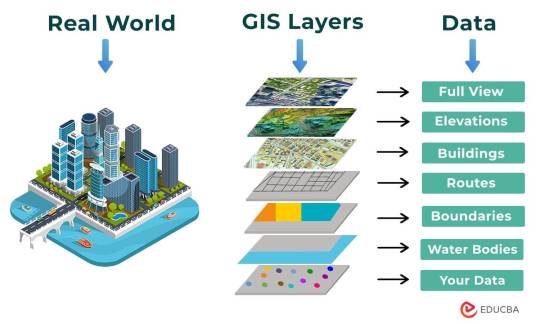
The following points elucidate the notable involvement of GIS in our daily lives:
Navigation and Location Services: GIS provides monitoring functions through the visual display of spatial data and precise geographical positioning of monitored vehicles, whereas GPS provides accurate, clear, and precise information on the position and navigation of a monitored or tracked vehicle in real-time and at the exact location.GIS is at the core of navigation applications and location-based services on smartphones. It enables accurate mapping, real-time navigation, and geolocation services, assisting individuals in finding locations, planning routes, and navigating unfamiliar areas.
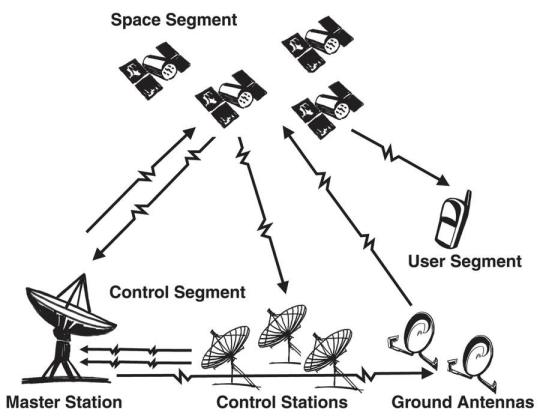
E-Commerce and Delivery Services: GIS software is a powerful tool for supply chain network planning. It helps determine the optimal location for distribution centers, warehouses, or other supply facilities. GIS is utilized in logistics and delivery services for optimizing routes, tracking shipments, and ensuring timely deliveries. E-commerce platforms leverage GIS to enhance the efficiency of their supply chain and last-mile delivery processes.

Weather Forecasting and Disaster Management: Many states are using GIS dashboard to monitor the rainfall across the state, on a real-time basis, from the data shared by rain sensors installed at various locationsGIS plays a crucial role in weather forecasting and disaster management. It assists meteorologists in analyzing spatial data, predicting weather patterns, and facilitating timely responses to natural disasters by mapping affected areas and coordinating emergency services.

Healthcare Planning and Disease Monitoring: Geographic Information Systems enable the visualization and monitoring of infectious diseases. Additionally GIS records and displays the necessary information that health care needs of the community as well as the available resources and materials. GIS supports public health initiatives by mapping the spread of diseases, analyzing healthcare resource distribution, and assisting in the planning of vaccination campaigns. It aids in identifying high-risk areas and optimizing healthcare service delivery.
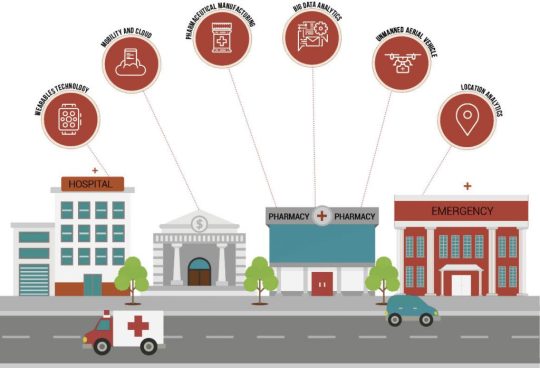
Social Media and Geo-tagging: GIS also helps in geotagging and other location related information in posts, it’s tools can map and visualize the spatial distribution of social media activity. This analysis can reveal trends, hotspots, and patterns in user engagement across different geographic areas. Many social media platforms incorporate GIS for geo-tagging, allowing users to share their location and experiences. This feature enhances social connectivity and facilitates the sharing of location-specific information.
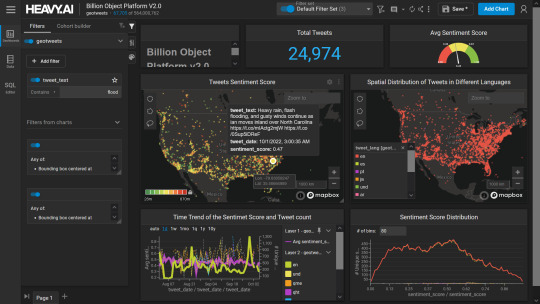
Smart City Initiatives: The Geographic Information System (GIS) offers advanced and user-friendly capabilities for Smart City projects and allows to capture, store and manipulate, analyze and visualize spatially referenced data. It is used for spatial analysis and modeling. It is the cornerstone of smart city planning, enabling the integration of data for efficient urban management. It supports initiatives related to traffic management, waste disposal, energy consumption, and overall infrastructure development.
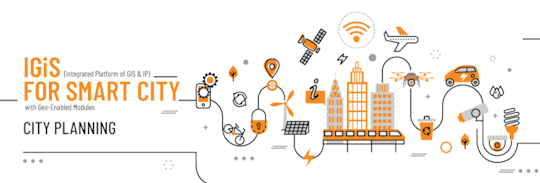
Education and Research: GIS is increasingly utilized in education and research for visualizing and analyzing spatial data. It enables students and researchers to explore geographic relationships, conduct field studies, and enhance their understanding of various subjects.

Agricultural Management and Precision Farming: Farmers leverage GIS to optimize agricultural practices by analyzing soil conditions, crop health, and weather patterns. Precision farming techniques, facilitated by GIS, contribute to increased crop yields and sustainable farming practices.

Real Estate and Property Management: In the real estate sector, GIS aids in property mapping, land valuation, and site selection. It provides real estate professionals with valuable insights into spatial relationships, market trends, and optimal development opportunities.
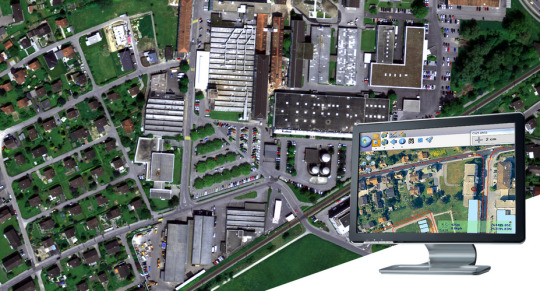
Tourism and Recreation: GIS enhances the tourism industry by providing interactive maps, route planning, and location-based information. It assists tourists in exploring destinations, finding attractions, and navigating efficiently.
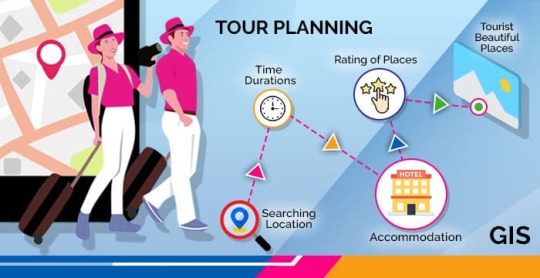
The broad and varied involvement of GIS in our daily lives underscores its significance as a technology that not only facilitates geographic data analysis but also contributes to the efficiency, safety, and interconnectedness of modern society. As GIS applications continue to evolve, their impact on daily activities is expected to further expand and refine.
#gis#architectdesign#architecture#city#education#geographic information system(gis)#geographical indication
12 notes
·
View notes
Text
Top 5 Most Needed Equipment in a Hospital
Hospitals are the cornerstone of healthcare, playing a crucial role in saving lives and improving the quality of care. To deliver optimal treatment, hospitals must be equipped with the latest and most essential medical devices. These tools not only enhance diagnostic accuracy but also ensure patient safety and efficient operations. In this article, we’ll explore the top 5 most needed equipment in a hospital, detailing their importance and functionality. If you’re looking to procure high-quality devices, consider exploring options to buy medical supplies online, where convenience meets affordability.
1. Diagnostic Imaging Systems
Diagnostic imaging systems are indispensable in modern medicine, allowing doctors to view and analyze internal structures of the body. Equipment such as X-ray machines, CT scanners, and MRI machines provide critical insights into a patient’s condition.
Why They’re Needed:
Enable early and accurate diagnosis.
Help in planning surgical procedures.
Monitor the effectiveness of ongoing treatments.
Investing in reliable diagnostic imaging systems ensures better patient outcomes and streamlines the treatment process. High-quality imaging devices are widely available through medical supplies online platforms, offering advanced technology at competitive prices.
2. Patient Monitoring Systems
Patient monitoring systems are essential for tracking vital signs such as heart rate, blood pressure, oxygen saturation, and temperature. These systems are particularly crucial in intensive care units (ICUs) and operating rooms.
Key Features:
Continuous monitoring of patient health.
Real-time alerts for any abnormalities.
Integration with hospital information systems for data storage and analysis.
Modern patient monitors are equipped with wireless capabilities, enabling remote monitoring. This feature is invaluable, especially during emergencies or in telemedicine settings.
3. BPL ECG Machine
An electrocardiogram (ECG) machine records the electrical activity of the heart and is essential for diagnosing various cardiac conditions. Among the top-rated ECG machines, the BPL ECG machine stands out for its precision and user-friendly design.
Benefits of BPL ECG Machines:
High accuracy in detecting arrhythmias and heart abnormalities.
Easy-to-use interface for healthcare professionals.
Portability, making it ideal for both hospital and home use.
Cardiac health is a critical aspect of patient care, and a dependable ECG machine ensures timely intervention. Purchasing a BPL ECG machine from trusted sources online guarantees authenticity and quality.
4. Surgical Instruments and Equipment
No hospital can function without a comprehensive range of surgical instruments. From scalpels and forceps to advanced robotic surgical systems, these tools are vital for performing both minor and major surgeries.
Must-Have Surgical Equipment:
Sterilizers to ensure a contamination-free environment.
Laparoscopic tools for minimally invasive procedures.
Advanced anesthesia machines for patient safety during operations.
To maintain high standards of patient care, hospitals must regularly update and replace their surgical instruments. Many healthcare facilities prefer sourcing these items through medical supplies online, ensuring timely delivery and cost-effectiveness.
5. Ventilators and Respiratory Equipment
Ventilators and other respiratory equipment have become indispensable, especially in the wake of the COVID-19 pandemic. These devices provide critical support for patients who struggle to breathe independently.
Importance of Ventilators:
Assist patients with respiratory failure.
Play a crucial role in ICUs and emergency care units.
Provide life-saving support during severe illnesses or post-surgical recovery.
Modern ventilators come with advanced settings to customize airflow and pressure, catering to the unique needs of each patient. Hospitals can explore various models and price ranges by purchasing these devices from medical supplies online platforms.
Why Choose Medical Supplies Online?
The healthcare industry is evolving rapidly, and so is the way hospitals procure equipment. Buying medical supplies online offers several advantages, including:
Wide Range of Options: From basic tools to advanced machinery, online platforms provide a comprehensive selection of medical equipment.
Cost Efficiency: Competitive pricing and frequent discounts make online shopping more affordable.
Convenience: Avoid the hassle of visiting multiple vendors; place orders with just a few clicks.
Authenticity: Reputable platforms ensure that all products meet international quality standards.
2 notes
·
View notes
Text
Why Electrical Safety Audits are Essential for Hospitals ?
In the fast-paced environment of modern healthcare, ensuring the safety of patients, staff, and visitors is paramount. One crucial aspect of hospital safety that often goes underappreciated is electrical safety. Electrical safety audits are essential for hospitals to identify potential hazards, implement corrective measures, and maintain a safe environment for everyone involved. Hospitals rely heavily on electrical equipment to provide high-quality patient care. From life-support machines to diagnostic tools, a stable and secure electrical system is the backbone of hospital operations. Electrical safety audits help identify faulty wiring, outdated equipment, and potential electrical hazards that could lead to catastrophic failures or even fires. By conducting regular audits, hospitals can ensure that their electrical systems are up-to-date and compliant with safety standards. Moreover, electrical safety audits play a vital role in minimizing downtime and ensuring the continuity of care. Unexpected electrical failures can disrupt hospital operations, leading to delays in treatment and potentially endangering patients' lives. By proactively identifying and addressing electrical issues, hospitals can avoid costly disruptions and maintain a seamless flow of patient care. This not only enhances the hospital's reputation but also contributes to overall patient satisfaction. NABH /JCI and all other quality assurance bodies insist for Electrical safety audits of the hospitals as part of their accredidation. Hospitals without such accreditation also supposed to do the Electrical safety audits of their facilities periodically for ensuring safety, reliability and efficiency Another significant benefit of electrical safety audits is the potential for cost savings. Identifying and rectifying electrical inefficiencies can lead to significant energy savings, reducing the hospital's operating costs. Additionally, regular maintenance and timely upgrades of electrical systems can extend the lifespan of equipment, reducing the need for costly replacements. In an industry where budgets are often tight, these savings can be redirected towards improving patient care and facilities. Irrespective of Size or Wintage of facilities, electrical safety audits are an indispensable part of hospital operations. They ensure the safety and well-being of patients, staff, and visitors, minimize downtime, and contribute to cost savings. By prioritizing electrical safety audits, hospitals can create a secure environment that supports the delivery of high-quality patient care. For more details call 8075168075
2 notes
·
View notes
Text


lorida’s surgeon general has warned healthcare providers against using Pfizer and Moderna’s COVID-19 mRNA vaccines due to concerns over genetic contamination.
Joseph Ladapo requested that providers prioritise other non-mRNA vaccines and treatments to ensure patient safety. He also called for the FDA to take greater regulatory responsibility in ensuring the integrity of the human genome.
Gov. Ron DeSantis has echoed concerns over mRNA vaccines and recently stated that Floridians would not be used as “guinea pigs” for unproven booster shots.
In November, Ladapo asked the Food and Drug Administration (FDA) and the Centers for Disease Control and Prevention (CDC) to investigate reports of foreign DNA material in Pfizer and Moderna’s vaccines. Ladapo argued that if mRNA vaccines were efficient delivery vehicles for mRNA, they may also be vehicles for delivering contaminant DNA, resulting in a process known as DNA integration. However, on Dec. 14, the FDA Director of the Center for Biologics Evaluation and Research, Peter Marks, wrote to Ladapo stating that animal studies over the past decade and global surveillance data showed no evidence of genotoxicity or genomic disruption.
Despite Ladapo’s concerns, the FDA stated that the practical risk of DNA integration was “quite implausible” and refuted the idea that mRNA vaccines presented a viable risk.
Ladapo contested the FDA’s claims, arguing that they had not performed adequate DNA integration assessments and that genotoxicity studies were an insufficient tool for assessing DNA integration risk. According to Ladapo, “If the risks of DNA integration have not been assessed for mRNA COVID-19 vaccines, these vaccines are not appropriate for use in human beings.”
The COVID vaccine destroyed my health. Since I had the vaccine I have not felt good two days in a row. It has caused me to have open heart surgery, ruptured my appendix, and left me with Stage Three Kidney disease. I am not the only one. My biggest fear is SDS. It's like my heart has become a living time bomb. Ironically I caught Covid two months AFTER the vaccine so.......so it didn't even work. --KD
--
9 notes
·
View notes
Text
The Conscript Nurse Lifestyle

is a carefully structured and standardized approach to nursing that aims to create a cohesive, disciplined, and efficient workforce of healthcare professionals. Consisting of various elements, this lifestyle emphasizes androgynous presentation, professional grooming, and uniformity among nurses to foster a sense of unity and dedication to patient care.

Key aspects of the Conscript Nurse Lifestyle include:
Androgynous Presentation: Nurses undergo special training and grooming to achieve an androgynous appearance. This involves shaving their heads, weight loss, toning their bodies to become lean, and utilizing cosmetics and skincare to maintain a uniform, polished look.
Uniform: Consistent with the androgynous presentation, nurses wear a standardized, one-piece white uniform. The uniform is designed to symbolize professionalism, cleanliness, and dedication to their role.
Alpha Numeric Designators: Instead of using traditional names, nurses are assigned non-gendered alpha numeric designators. This measure is implemented to protect patient privacy and foster a professional environment while promoting a sense of unity among the nursing staff.
Specialized Training: Nurses undergo rigorous training, including neuro-psychological programming and virtual reality-based simulations, to enhance their skills, adaptability, and decision-making abilities. This ensures they are well-prepared to handle a wide range of medical situations efficiently.
Disciplined Lifestyle: Nurses adhere to a disciplined lifestyle, including regular physical fitness routines, adherence to strict diets, and weekly reinforcement sessions. These practices are designed to maintain peak physical and mental performance, as well as reinforce the commitment to their profession.
Chastity Devices: Similar to other conscripted roles, the Conscript Nurse Lifestyle involves wearing chastity devices during duty hours to maintain focus on patient care and professional boundaries.
Adherence to Protocols: Conscript nurses are expected to strictly adhere to established healthcare protocols and standardized procedures, ensuring consistency and precision in their care delivery
Restricted Personal Freedom: During their conscript service, nurses may experience limited personal freedom due to strict protocols and regulations. They may be prohibited from pursuing certain recreational activities or having unregulated social interactions to maintain focus on their duties.
Communal Living: Conscript nurses may live in communal dormitory-style accommodations provided by the nursing corps. This living arrangement fosters camaraderie and unity among the nursing staff.
Restricted Mobility: While on duty, conscript nurses' movements may be closely monitored and restricted to ensure prompt responses to patient needs and maintain a disciplined work environment.
Performance Evaluation: Conscript nurses are subject to regular performance evaluations to ensure compliance with established standards and protocols. Positive performance is often rewarded with recognition and privileges within the corps.

19 notes
·
View notes
Text
Hiranandani Kavesar Thane | Embrace Luxury Living

Welcome to Hiranandani Kavesar Thane where luxury meets comfort in the heart of Thane. This premium residential project offers meticulously designed 2, 3 & 4 BHK luxury apartments that redefine modern living. Located in the vibrant locality of Kavesar, it promises a luxury lifestyle with world-class amenities, Modern architecture, and a serene environment.
Key Highlights
1. Prime Location It is strategically located in Thane, one of Mumbai's fastest-growing suburbs. With excellent connectivity to major highways, business hubs, educational institutions, and healthcare facilities, residents enjoy the convenience of city life while being surrounded by nature.
2. Luxurious Living Spaces Our luxury 2, 3 & 4 BHK apartments are designed to offer the perfect blend of elegance and functionality. Each apartment is crafted with precision, featuring high-quality finishes, large windows for ample natural light, and expansive balconies that provide stunning views of the cityscape and lush greenery.
3. World-Class Amenities Experience a lifestyle of luxury and convenience with our state-of-the-art amenities:
Clubhouse: A well-equipped clubhouse for social gatherings and events.
Fitness Center: A fully-equipped gymnasium with modern fitness equipment.
Landscaped Gardens: Beautifully landscaped gardens and walking paths for a refreshing retreat.
Security: 24/7 security with CCTV surveillance and trained personnel ensuring a safe environment.
4. Sustainable Living It is committed to sustainable living. The project incorporates eco-friendly practices such as rainwater harvesting, solar power utilization, and energy-efficient lighting to minimize the environmental impact and promote a green lifestyle.
5. Proximity to Essentials Residents of Hiranandani Kavesar Projects In Thane enjoy easy access to a wide range of essential services and recreational facilities. Well-known medical facilities, retail establishments, schools, and entertainment venues are all conveniently located nearby, giving you and your family easy access to all you require.
Why Choose Hiranandani Kavesar Thane?
Elegant Interiors: Each apartment is designed with a keen eye for detail, ensuring a perfect blend of aesthetics and functionality. From modern kitchens to luxurious bathrooms, every element exudes sophistication.
Community Living: The property offers a sense of community with thoughtfully designed common areas and social spaces where residents can connect and build lasting relationships.
Investment Opportunity: Thane's real estate market is booming, making this not just a dream home but also a smart investment. The property is expected to be appreciated, providing a lucrative opportunity for homeowners and investors alike.
Developer Trust: Hiranandani Group is renowned for its commitment to quality, timely delivery, and customer satisfaction. With a legacy of excellence in real estate, you can trust that your home is built to the highest standards.
Conclusion
Hiranandani Kavesar Thane offers a luxurious and holistic living experience, combining modern comforts with a serene environment. Whether you're looking for a dream home for your family or a sound investment opportunity, Westgate by House of Hiranandani Thane is the perfect choice. Embrace a lifestyle of luxury, convenience, and community Welcome home.
#Hiranandani Kavesar#Hiranandani Kavesar Thane#Hiranandani Kavesar Projects In Thane#Hiranandani Projects In Kavesar Thane#Westgate by House of Hiranandani#Westgate by House of Hiranandani Thane.#realestate#apartments#mumbai
2 notes
·
View notes
Text
Why Blunt Filter Needles Are Essential for Precision in Medical Procedures

When it comes to medical procedures, precision is crucial. Every dosage, every injection, and every medication must be accurately administered to ensure the best possible outcomes for patients. This is where syringe filters with blunt needles come in. Blunt filter needles are specialized medical needles designed to enhance precision in medical procedures. In this blog post, we will explore the benefits of using blunt filter needle and their role in achieving precision in medical procedures.
What Are Blunt Filter Needles? Blunt filter needles are a game-changer in the world of medical procedures. Unlike traditional needles, which have a sharp Blunt-tip, blunt filter needle have a rounded tip that reduces the risk of tissue damage and needlestick injuries. This design not only makes them safer for healthcare professionals to use but also allows for more precise delivery of medications and fluids.
The Need for Precision in Medical Procedures The precision of medical procedures is vital for various reasons. First, accurate dosages are essential to ensure that patients receive the right amount of medication for their condition. This helps prevent under or overdose, which can lead to complications and delayed recovery.
Additionally, precision in medical procedures reduces medication waste, which can be costly and harmful to the environment. Most importantly, it helps avoid incorrect medication administration, which can have severe consequences for patients.
Read More : Choose the correct Hypodermic needle for your patient
The Role of Blunt Filter Needles in Precision Blunt filter needle play a crucial role in achieving precision in medical procedures. They are design to work efficiently, ensuring accurate aspiration and injection of medication. This is especially important for procedures that require high accuracy, such as intravenous administration, epidural injections, intramuscular injections, biopsies, and spinal taps. Blunt filter needle also make it easier for medical professionals to handle and administer medication, reducing the risk of errors.
How to Choose the Right Blunt Filter Needle When it comes to choosing the right blunt filter needle, there are a few factors to consider. First, the needle size and gauge should be suitable for the intended use. Different procedures may require different needle sizes and gauges, so it is essential to consult a medical professional for guidance. Additionally, the needle must be compatible with the syringe being used. Lastly, it is crucial to ensure that the blunt filter needle has quality and safety certifications to guarantee its efficacy and compliance with regulations.
Benefits of Blunt Filter Needles Blunt filter needles have many benefits that make them an essential tool in medical settings. First and foremost, they prevent accidental needle sticks. This is especially important for medical professionals who handle syringes and needles daily. Blunt filter needle also reduce needle breakage, which can lead to medication waste and increase the risk of complications. Additionally, these needles minimize tissue damage, resulting in less pain and discomfort for patients.
Moreover, blunt filter needle ensure accurate medication delivery. With their design, they can aspirate and inject with precision, decreasing the chances of incorrect dosages. This also leads to improved patient comfort as medication is delivered directly to the intended site.
Applications of Blunt Filter Needles in Medical Procedures Many medical procedures require precision, and blunt filter needle are a valuable tool in achieving it. Some of these procedures include intravenous (IV) administration, where accurate dosages are crucial for proper medication absorption and delivery. Epidural injections, which are use to manage pain, also require precision to avoid complications. Similarly, intramuscular injections, biopsies, and spinal taps all need accurate medication delivery for the best outcomes.
Conclusion In conclusion, blunt filter needles are an essential tool in achieving precision in medical procedures. Their benefits, such as preventing needle sticks, reducing breakage, and improving accuracy, make them a valuable addition to any medical setting. As a patient, it is essential to discuss with your healthcare provider the use of blunt filter needles for your medical procedures. With the right blunt filter needle, you can rest assured that your medical procedures will be performed with the utmost precision for the best possible outcomes.
Source : Why Blunt Filter Needles Are Essential for Precision in Medical Procedures
#Blunt Filter Needles#Medical Accuracy#Needle Safety#Safe Needle Usage#Medical Instruments#Medical Essentials#Precision Matters#Safe Needles#Healthcare
2 notes
·
View notes
Text
The Rise of Custom Healthcare Apps: Transforming Patient Care

The healthcare industry is undergoing a digital transformation. At the heart of this revolution are custom healthcare apps.
These apps are not just digitizing patient records and streamlining administrative processes. They are fundamentally changing how healthcare is delivered and experienced.
Custom healthcare apps are enhancing patient care, improving accessibility, and transforming patient experiences. They are making healthcare more personalized, efficient, and patient-centric.
This article explores how custom healthcare apps are revolutionizing the healthcare industry. It delves into the key features of these apps and their impact on both healthcare providers and patients.
Whether you're a healthcare professional, a patient, or simply interested in the intersection of healthcare and technology, this article will provide valuable insights.
Understanding Custom Healthcare Apps
Custom healthcare apps are mobile applications designed specifically for the healthcare sector. They are tailored to meet the unique needs of healthcare providers and patients.
These apps can range from patient management systems to telemedicine platforms. They can also include apps for appointment scheduling, medication reminders, and health tracking.
The key feature of custom healthcare apps is their ability to be customized. This means they can be designed to fit the specific requirements of a healthcare organization or a patient group.
What Are Custom Healthcare Apps?
Custom healthcare apps are more than just mobile versions of healthcare services. They are tools that leverage technology to improve healthcare delivery and outcomes.
These apps can be designed for various users, including doctors, nurses, hospital administrators, and patients. They can also be tailored for specific medical conditions or treatment plans.
In essence, custom healthcare apps are digital solutions that address the unique challenges and opportunities in the healthcare sector.
The Need for Personalized Healthcare Solutions
The healthcare industry is complex and diverse. It deals with a wide range of medical conditions, treatment protocols, and patient needs.
A one-size-fits-all approach is not effective in this context. This is where custom healthcare apps come in.
They offer personalized solutions that can adapt to the specific needs of each patient or healthcare provider. This level of personalization is crucial in improving healthcare outcomes and patient satisfaction.
How Custom Healthcare Apps Are Revolutionizing the Industry
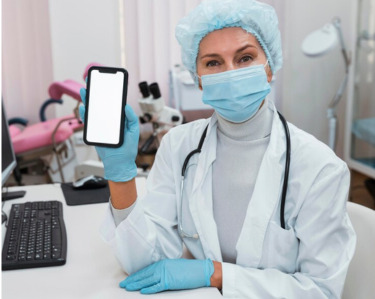
The impact of custom healthcare apps on the industry is profound. They are transforming the way healthcare is delivered and experienced.
These apps are making healthcare more accessible, efficient, and patient-centric. They are also helping healthcare providers to improve their services and outcomes.
Custom healthcare apps are not just a trend. They are a key part of the digital transformation in healthcare.
Enhancing Patient Care Through Customization
Custom healthcare apps are enhancing patient care in many ways. They provide personalized care experiences that are tailored to each patient's needs and preferences.
These apps can integrate with wearable technology for continuous health tracking. They can also support telemedicine services, expanding access to care.
Custom healthcare apps can streamline appointment scheduling and reminders. They can also enable secure messaging between patients and healthcare providers.
Streamlining Healthcare Processes
Custom healthcare apps are also streamlining healthcare processes. They can reduce administrative burdens on healthcare staff.
These apps can assist in managing chronic diseases by tracking symptoms and vitals. They can also support the digitization of healthcare records for better data management.
Custom healthcare apps can improve diagnostic accuracy with AI integration. They can also enhance collaboration among different healthcare professionals.
Improving Accessibility and Patient Experiences
Custom healthcare apps are improving accessibility to healthcare services. They can offer language translation services to overcome communication barriers.
These apps can provide educational resources and health tips to patients. They can also include medication tracking and alerts to improve adherence.
Custom healthcare apps can provide analytics to help improve healthcare services. They can also be used to collect patient feedback for quality improvement.
Key Features of Successful Custom Healthcare Apps
Custom healthcare apps come with a range of features. These features are designed to improve patient care and streamline healthcare processes.
The key features of successful custom healthcare apps include real-time data access, secure communication, and integration with wearables.
These features not only enhance the functionality of the apps but also improve their usability and effectiveness.
Real-Time Data Access and Patient Monitoring
One of the key features of custom healthcare apps is real-time data access. This feature allows healthcare providers to access patient data in real time.
Real-time data access can improve patient monitoring and care. It can also help healthcare providers to make informed decisions.
This feature can also facilitate remote monitoring, reducing the need for in-person visits.
Secure Communication and Telemedicine
Secure communication is another important feature of custom healthcare apps. This feature enables secure messaging between patients and healthcare providers.
Secure communication can improve patient engagement with their own health management. It can also support telemedicine services.
Telemedicine services can expand access to care, especially for patients in remote areas.
Integration with Wearables and Health Tracking
Integration with wearables is a key feature of custom healthcare apps. This feature allows the apps to integrate with wearable technology for continuous health tracking.
Health tracking can assist in managing chronic diseases. It can also support preventive healthcare by promoting healthy lifestyle choices.
Integration with wearables can also enhance patient engagement and self-management.
The Impact on Healthcare Providers and Patients
Custom healthcare apps have a significant impact on both healthcare providers and patients. They are transforming the way healthcare is delivered and experienced.
For healthcare providers, these apps bring efficiency and collaboration. For patients, they offer empowerment and engagement.
For Healthcare Providers: Efficiency and Collaboration
Custom healthcare apps can greatly improve efficiency in healthcare delivery. They can streamline processes and reduce administrative burdens.
These apps can also enhance collaboration among different healthcare professionals. They can provide a platform for sharing patient data and coordinating care.
With these apps, healthcare providers can also access analytics to help improve healthcare services.
For Patients: Empowerment and Engagement
For patients, custom healthcare apps offer empowerment and engagement. These apps provide personalized care experiences and improve patient engagement with their own health management.
They also offer real-time access to personal health data. This can empower patients to take an active role in their health management.
Moreover, these apps can provide educational resources and health tips to patients. This can further enhance patient engagement and health literacy.
Overcoming Challenges in Custom Healthcare App Development
Developing custom healthcare apps is not without challenges. These challenges range from technical to regulatory.
However, with the right approach, these challenges can be overcome. This can pave the way for more innovative and effective healthcare solutions.
Addressing Security and Compliance Issues
One of the major challenges in custom healthcare app development is ensuring security and compliance. Healthcare data is sensitive and must be protected.
Custom healthcare apps must comply with healthcare regulations like HIPAA. They must also ensure the privacy and security of patient data.
Addressing these issues requires a thorough understanding of healthcare regulations. It also requires the implementation of robust security measures.
Ensuring User-Friendly Design and Accessibility
Another challenge is ensuring user-friendly design and accessibility. Custom healthcare apps must be easy to use for both healthcare providers and patients.
They must also be accessible to people with different abilities. This includes people with visual, hearing, or cognitive impairments.
Ensuring user-friendly design and accessibility requires a user-centered design approach. It also requires adherence to accessibility standards and guidelines.
The Future of Custom Healthcare Apps
The future of custom healthcare apps is promising. With advancements in technology, these apps are set to become even more powerful and effective.
They are expected to play a key role in the shift towards value-based care. They will also contribute to the digitization of healthcare records and processes.
Emerging Technologies and Trends
Emerging technologies like AI and VR are set to revolutionize custom healthcare apps. AI can improve diagnostic accuracy and provide decision support tools for clinicians.
VR can offer immersive experiences for patient education. It can also be used for therapy sessions, especially for mental health conditions.
Preparing for a More Connected Healthcare Ecosystem
As we move towards a more connected healthcare ecosystem, custom healthcare apps will play a crucial role. They will facilitate the integration of different healthcare systems and services.
They will also enable real-time data sharing and collaboration among healthcare professionals. This will lead to improved healthcare outcomes and patient experiences.
Conclusion
The rise of custom healthcare apps is transforming patient care. These apps are revolutionizing the healthcare industry by enhancing patient care, streamlining processes, and improving accessibility.
They are not just tools for managing health. They are powerful platforms that empower patients and healthcare providers alike.
The future of healthcare is digital, and custom healthcare apps are leading the way. They are set to become an integral part of the healthcare ecosystem.
Embracing these apps is not just about keeping up with technology. It's about improving healthcare outcomes and experiences for everyone.
2 notes
·
View notes
Text
Transforming Healthcare in Dubai: The Digital Revolution Through App Innovation
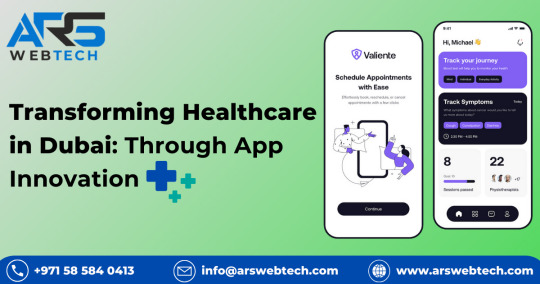
In the United Arab Emirates, the landscape of healthcare has undergone a transformative shift, predominantly propelled by the evolution of app development in the health sector. This exposition, with a particular focus on Dubai, elucidates the diverse ways in which these technological advancements have redefined aspects of patient care, access to medical services, and the overall dynamics of medical procedures.
Dubai stands as a pioneer in this transformative journey, leading the incorporation of cutting-edge healthcare applications. These digital solutions have revolutionized conventional healthcare delivery, encompassing a range of services from remote consultations to the simplification of appointment scheduling. This narrative aims to unfold Dubai's role as a leader in reshaping healthcare, underscoring advancements in access, patient engagement, and the overall efficiency of healthcare processes.
The rise of sophisticated and beneficial healthcare applications marks a significant shift in the UAE's approach to healthcare delivery. User-friendly and enhancing access and convenience, these apps have become fundamental to the modern healthcare system in the UAE. This examination delves into the influence of these applications on the national healthcare landscape, highlighting their contribution to the advancement of digital health solutions.
In the medical realm of Dubai, healthcare applications have emerged as indispensable tools for both healthcare providers and patients. Their functionalities vary, ranging from enabling appointment bookings to facilitating virtual medical consultations and ongoing health monitoring. The surge in healthcare app development in Dubai has democratized access to healthcare, making it more accessible and convenient for all. As these applications continue to refine the healthcare experience, Dubai is at the forefront of integrating technology into daily life, making healthcare an integral part of our daily existence.
The widespread adoption of smartphones in the UAE has been a catalyst for the rapid embrace of healthcare applications. This integration of healthcare apps into daily life has streamlined access to healthcare services, thanks to the increasing use of smartphones.
A notable revolution in healthcare in Dubai is the mainstreaming of virtual consultations. This paradigm shift allows patients to engage with healthcare professionals from the comfort of their homes, significantly enhancing accessibility and convenience. The significant role played by pharmacy delivery app developers in Dubai in facilitating this transition is noteworthy.
In terms of appointment scheduling and reminders, healthcare applications in Dubai have brought about a significant transformation. The emergence of Android app developers in Dubai has led to the creation of platforms that automate appointment reminders and simplify the scheduling process. This technological integration has enhanced the patient experience and contributed to improved health outcomes.
Personalized health information provided through healthcare apps empowers individuals to actively manage their health. These applications, developed with the expertise of IO developers in Dubai, focus on user-friendly solutions, making the healthcare system more efficient and centered on patient needs.
Medication management is a crucial aspect of patient care. Healthcare applications assist users in effectively managing their medications, providing timely reminders, and information about drug interactions and side effects. The synergy of virtual consultations and pharmacy delivery apps is transforming the healthcare delivery model in Dubai, increasing convenience for patients.
The integration of Electronic Health Records (EHRs) through healthcare applications has revolutionized the sharing of medical information among healthcare providers in the UAE. This significant development, supported by E-learning app development companies in the UAE, has enhanced the efficiency of healthcare delivery and strengthened patient safety.
Data analytics generated by healthcare applications provide valuable insights for healthcare professionals in the UAE. This approach, driven by data, facilitates evidence-based decision-making, leading to markedly improved patient outcomes. The analytical capabilities of these applications represent a crucial shift towards a more informed and efficient healthcare system.
While the adoption of healthcare applications raises concerns about the security of medical data, developers in the UAE are committed to implementing robust security measures. This dedication ensures the protection of patient information and aligns with strict data protection regulations, reinforcing user confidence in the use of healthcare applications.
In the UAE, the development of healthcare applications adheres to strict regulatory frameworks, such as the Health Data Protection Regulation. This commitment to compliance ensures the responsible handling of patient data, building trust among users. The emphasis on regulatory adherence highlights the dedication to maintaining high standards of data security and privacy in healthcare applications.
In conclusion, the advent of healthcare applications in the UAE has significantly impacted the healthcare sector. These applications have facilitated easier access to and interaction with healthcare services, becoming an essential part of modern healthcare. As technology continues to evolve, the UAE's healthcare sector is poised for further innovation. This future envisions a healthcare experience that goes beyond providing services, merging technology with compassionate care. Ars Webtech is at the forefront of this revolution, committed to pioneering innovative healthcare solutions and striving towards a future where healthcare is not just a necessity but a personalized journey towards well-being.
#ios app development#mobile app company#mobile app developer company#digital marketing agency#healthcareapp#healthcare app development#web development#android app development
4 notes
·
View notes
Text
The Impact of Gene Therapy on Modern Medicine

Gene therapy is a groundbreaking approach in medical science. It offers hope to many patients suffering from genetic disorders and other diseases. The aim of gene therapy is to provide long-lasting and potentially curative treatments by targeting the root cause of these ailments at the genetic level. This approach highlights a significant transformative impact on modern medicine.
Gene therapy involves introducing, altering, or removing genes within an individual's cells to treat or prevent disease. The two primary types are somatic gene therapy, which targets nonreproductive cells, and germline gene therapy, which affects reproductive cells and can be passed on to future generations. Techniques such as viral vectors, which deliver new genes to cells, and CRISPR-Cas9, a precise gene-editing tool, have revolutionized this field, enabling more accurate and efficient genetic modifications.
The journey of gene therapy began in the early 1970s with foundational research that paved the way for its clinical application. However, it was not until 1990 that a significant milestone was achieved. This was when the first successful gene therapy procedure was performed on a young girl with severe combined immunodeficiency (SCID). This landmark event demonstrated the potential of gene therapy to cure genetic disorders. Since then, there have been a number of clinical trials conducted, leading to the development of therapies for various other conditions.
Gene therapy has shown huge potential in treating a range of genetic disorders. For instance, in cystic fibrosis, a condition caused by a defective gene, gene therapy aims to introduce a functional copy of the gene into the patient's lungs. Similarly, in muscular dystrophy, gene therapy seeks to restore the missing or defective dystrophin protein in muscle cells.
Cancer treatment has also seen remarkable advances through gene therapy. Techniques like CAR-T cell therapy, which modifies a patient's T cells to target cancer cells, have shown major success in treating certain types of leukemia and lymphoma. There is also ongoing research exploring gene therapy applications in neurological disorders like Parkinson's disease and cardiovascular diseases, expanding its potential reach.
One of the most important advantages of gene therapy is its likelihood to provide targeted and precision medicine. By addressing the underlying genetic cause, gene therapy can offer more effective and personalized treatments compared to traditional methods. This precision lessens the risk of side effects and enhances treatment outcomes.
Additionally, gene therapy holds the promise of curing previously untreatable conditions. For many genetic disorders, traditional treatments only manage symptoms without addressing the root cause. Gene therapy, on the other hand, offers the potential for a permanent cure, improving patients' quality of life and reducing long-term healthcare costs.
Some areas need improvement, and most gene therapies are still in clinical trials. This means that there are technical and scientific challenges that researchers are continually working to overcome. This includes effectively delivering therapeutic genes to the right cells, avoiding immune system reactions, and ensuring the long-term stability of the introduced genes.
Ethical concerns also arise, particularly with germline gene therapy, which can alter the genetic makeup of future generations. The implications of such modifications raise questions about consent, the potential for genetic enhancement, and the possibility of creating societal inequalities. Ensuring equitable access to these advanced therapies and navigating the regulatory landscape for approval and safety are crucial considerations for the future of gene therapy.
Regardless, the future of gene therapy is promising, with ongoing research and development opening new avenues for treatment. Advances in delivery methods, such as nanoparticles and improved viral vectors, aim to enhance the precision and efficiency of gene therapy. Researchers are also exploring the possibility of gene therapy to treat more complex conditions.
As technology evolves, gene therapy is expected to play an increasingly significant role in health care. There are expectations of having personalized medicine, where treatment is tailored to an individual's genetic makeup, offering hope for more effective interventions.
1 note
·
View note